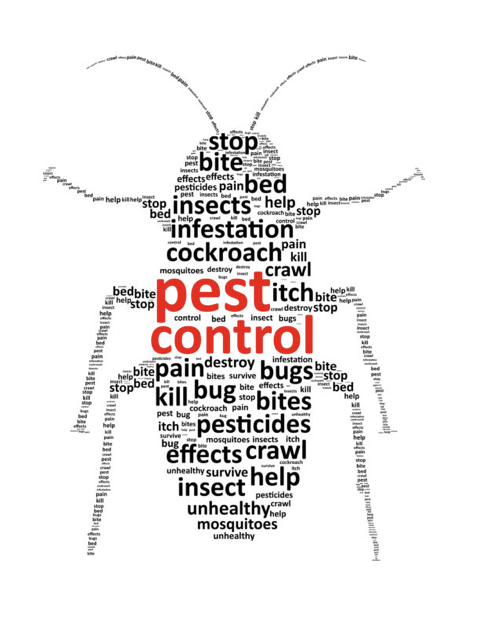Excitement About Eco Bed Bug Exterminators Dc
Excitement About Eco Bed Bug Exterminators Dc
Blog Article
Eco Bed Bug Exterminators Dc Fundamentals Explained
Table of ContentsThe Best Guide To Eco Bed Bug Exterminators DcNot known Facts About Eco Bed Bug Exterminators Dc9 Easy Facts About Eco Bed Bug Exterminators Dc ShownMore About Eco Bed Bug Exterminators DcExcitement About Eco Bed Bug Exterminators Dc
Since chemicals are toxic, they are also possibly dangerous to humans, pets, various other organisms, and the setting. People who make use of chemicals or routinely come in call with them have to understand the family member toxicity, potential health and wellness effects, and preventative actions to lower direct exposure to the items they utilize. Risk, or risk, of making use of pesticides is the capacity for injury, or the degree of danger entailed in making use of a chemical under a provided set of problems.
Applicators can reduce or virtually remove exposure-- and therefore minimize hazard-- by following the label guidelines, making use of personal safety apparel and devices (PPE), and managing the chemical correctly. For example, greater than 95 percent of all pesticide direct exposures originate from dermal direct exposure, primarily to the hands and forearms. By using a pair of unlined, chemical-resistant gloves, this sort of direct exposure can be nearly removed.
The harmful results that happen from a single exposure by any type of course of entry are called "intense results." The four courses of direct exposure are dermal (skin), inhalation (lungs), dental (mouth), and the eyes. Severe toxicity is established by taking a look at the dermal toxicity, breathing poisoning, and oral poisoning of guinea pig.
10 Easy Facts About Eco Bed Bug Exterminators Dc Shown
Severe poisoning is determined as the amount or concentration of a toxicant-- the a.i.-- required to kill half of the pets in an examination populace. This step is generally revealed as the LD50 (dangerous dose 50) or the LC50 (dangerous focus 50). Furthermore, the LD50 and LC50 worths are based on a single dosage and are recorded in milligrams of pesticide per kilogram of body weight (mg/kg) of the examination animal or partially per million (ppm).
The lower the LD50 or LC50 worth of a chemical item, the better its poisoning to people and pets. Pesticides with a high LD50 are the least toxic to humans if used according to the instructions on the product label. The chronic poisoning of a pesticide is figured out by subjecting guinea pig to lasting exposure to the energetic component.
The chronic poisoning of a chemical is a lot more tough than intense poisoning to determine with lab evaluation. Products are classified on the basis of their relative intense poisoning (their LD50 or LC50 values). Chemicals that are categorized as extremely hazardous (Poisoning Group I) on the basis of either dental, facial, or inhalation toxicity must have the signal words risk and POISON published in red with a skull and crossbones symbol plainly presented on the front panel of the plan label.
The severe (single dose) oral LD50 for chemical items in this team varies from a trace total up to 50 mg/kg. For example, direct exposure learn this here now of a couple of decreases of a material taken orally can be deadly to a 150-pound individual. Some chemical products have simply the signal word risk, which tells you absolutely nothing about the severe poisoning, just that the item can cause severe eye damages or severe skin inflammation
More About Eco Bed Bug Exterminators Dc
In this classification, the severe oral LD50 arrays from 50 to 500 mg/kg. A tsp to an ounce of this material can be fatal to a 150-pound individual (exterminator DC). Chemical items classified as either slightly toxic or relatively nontoxic (Poisoning Classifications III and IV) are required to have the signal word care on the chemical label

All pesticide toxicity values, consisting of the LD50, can be found on the item's Material Security Information Sheet (MSDS) - how to get rid of bed bugs. Chemical tags and MSDS can be acquired from sellers or produces. Additionally, most products additionally know that can be located on the Net. The symptoms of pesticide poisoning can range from a mild skin inflammation to coma and even fatality.
Individuals likewise vary in their sensitivity to various degrees of these chemicals. Some people may show no response to a direct exposure that may cause extreme health problem in others (bed bug spray). As a result of prospective health and wellness issues, pesticide users and trainers have to identify the typical indicators and signs of chemical poisoning. The results, or signs, of chemical poisoning can be generally defined as either topical or systemic.
Some Known Incorrect Statements About Eco Bed Bug Exterminators Dc
Dermatitis, or swelling of the skin, is accepted as the most commonly reported topical result connected with chemical direct exposure. Symptoms of dermatitis variety from reddening of the skin to rashes and/or blisters. Some individuals have a tendency to cough, hiss, or sneeze when subjected to pesticide sprays. Some individuals react to the solid odor and irritating results of oil extracts utilized as service providers in chemical products.
This symptom generally subsides within a few minutes after an individual is eliminated from the exposure to the irritant. Nevertheless, a response to a chemical item that causes a person not just to sneeze and cough but additionally to develop extreme acute respiratory signs is much more likely to be a true hypersensitivity or allergy.
Systemic results are rather different from topical effects. They frequently take place far from the initial point of get in touch with as a result of the chemical being soaked up right into and dispersed throughout the body. Systemic results usually consist of queasiness, vomiting, fatigue, headache, and intestinal disorders. In sophisticated poisoning situations, the individual might experience adjustments in heart rate, difficulty breathing, convulsions, and coma, which might lead to death.
Report this page